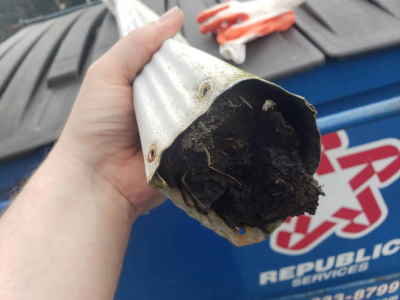How to Execute an Effective Spring Maintenance Program

As we prepare for warmer months ahead, many homeowners look to do spring cleaning and home maintenance. Spring and summer also mark the most popular times to move, with 80% of all moves in the U.S. occurring between April and September. With customers preparing to move or buy a new home during this time, our team is typically busy with calls for inspections and maintenance needs.
During these inspections and throughout the spring maintenance period, it’s crucial for contractors to not overlook common damages that may have occurred throughout the winter season, like ice dams and water overflow, or issues with the gutter, foundation, caulking or flashings around chimneys, so that customers can avoid costly repairs before the summer heat sets in.
Importance of Spring Maintenance
Spring maintenance is necessary for both residential and commercial properties, and we recommend maintenance at least once, sometimes twice, a year. The number of maintenance checks depends on the building and the amount of tree coverage and air conditioning units on the roof. Inspections are recommended by building manufacturers for roof warranties on an annual basis, so we recommend an inspection in which the state of the roof is documented, any mechanical damages are repaired, and gutters, drains and scuppers are cleaned.

At Bone Dry Roofing, we work spring maintenance needs into our sales flow based on the customer’s request. If a customer is part of our spring maintenance program, they receive free maintenance services up to five times throughout the life of their warranty to keep the warranty valid. If a customer is not part of our spring maintenance program, we also provide free home or commercial estimates to find and offer to fix any maintenance issues.
Maintenance Tasks in the Spring
Contractors need to inspect the roof for common problems, like low nails, nail pops, damaged flashing around chimneys and the amount of caulk remaining on exposed nail beads to prevent leaks. They also need to check and clean gutters and downspouts. These tasks should be performed at least yearly, especially in areas with colder temperatures, or in the Midwest, where parts of a roof commonly freeze and thaw.
It’s crucial for contractors to not only inspect the roof, but also to check a home or building’s attic to properly assess the other side of the roof. It’s important to ensure all exhausts and bathroom vents are still attached. If those are not attached or have been incorrectly installed, this creates mold and moisture growth in the attic, and ultimately, leads to costly and invasive repairs that need to be handled by the contractor.
One of the most common types of damage that must be managed in the spring is a roof ice dam, which occurs when heavy snow buildup melts during the day and then refreezes when temperatures drop overnight. It's common for the melted water and ice to lay under the shingles until water enters the attic and eventually damages the ceilings and wall. If an ice dam goes unnoticed for an extended period of time, it can do significant damage to the building, according to the National Weather Service.
old roofing shingles | Getty Images/iStockphoto
Homeowners will usually know when an ice dam has built up because a leak will occur; however, there are other ways that an ice dam could form that are not as visible. The only way to confirm a home does not have an ice dam is to check the attic and ensure nothing attached to the roof is rotting, wet or molded. An ice dam also usually means there is an insulation issue with the roof along the soffit line. To fix ice dams, contractors need to install additional ice and water shields or add more insulation in an attic.
Gutter issues can also lead to expensive repairs, including water overflow and foundation problems with the fascia or soffit and even wood rot. Contractors need to check if a structure’s gutters are clean and if the gutter guards are in good condition.
Spring Maintenance Tools
The tools needed to execute an effective spring maintenance program are similar to the tools contractors use every day, including tubes of silicon, caulk, hammers and roofing nails. Rain collars for plumbing boots are also needed in case they must be replaced. Rain collars sit on top of the plumbing boots and prevent dry rotting and water leaks. Collars should be inspected and replaced frequently to prevent major water issues in the future.
We often tell customers: if you have a roof, it’s important to keep up with its annual service needs, and these maintenance programs are typically affordable and much less expensive than the cost of doing a roof repair. If a customer has a new roof and wants to retain its condition, or if a customer has an older roof and wants it to last for another several years before a full reroof, maintenance is required to ensure the roof lasts as long as it’s supposed to.
Spring is the best time to perform maintenance tasks as we head into the rainy season when more leaks could occur. Additionally, maintenance is crucial for maintaining the health of the roof and avoiding costly repairs later. As a roofing contractor, it is essential to provide customers with the information necessary to perform maintenance tasks in the spring and ensure their roof is in top condition for the remainder of the year.
Looking for a reprint of this article?
From high-res PDFs to custom plaques, order your copy today!






